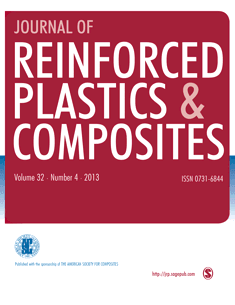
JOURNAL OF REINFORCED PLASTICS AND COMPOSITES
Scope & Guideline
Pioneering Innovations in Reinforced Plastics
Introduction
Aims and Scopes
- Development and Characterization of Composites:
Research often centers around developing new composite materials, including natural fibers, synthetic polymers, and hybrid systems. These studies involve mechanical, thermal, and chemical characterization to assess performance in various applications. - Manufacturing and Processing Techniques:
Papers frequently explore novel manufacturing techniques for composites, such as 3D printing, vacuum infusion, and automated fiber placement, emphasizing process optimization and efficiency. - Performance Evaluation under Various Conditions:
The journal features studies assessing the performance of composites under diverse environmental conditions, including temperature variations, moisture absorption, and mechanical stresses. - Innovative Applications of Composites:
Research is directed towards exploring the use of composites in advanced applications, such as aerospace, automotive, biomedical, and structural engineering, highlighting their impact on performance and sustainability. - Interfacial Properties and Reinforcement Mechanisms:
Significant attention is given to understanding the interfacial bonding between fibers and matrices, as well as the mechanisms that enhance the overall strength and durability of composite materials.
Trending and Emerging
- Sustainability and Biocomposites:
There is a growing trend towards research on sustainable materials, including biocomposites made from natural fibers and biodegradable polymers, aligning with global sustainability goals. - Advanced Manufacturing Techniques:
Emerging topics include the application of 3D printing and additive manufacturing in creating complex composite structures, which are gaining traction for their design flexibility and material efficiency. - Nanocomposites and Hybrid Materials:
A significant increase in studies focused on nanocomposites and hybrid materials that leverage nanoparticles or multiple fiber types to enhance mechanical properties and functionality. - Smart and Multifunctional Composites:
Research is trending towards the development of smart composites that can respond to environmental stimuli, integrating functionalities such as self-healing, shape memory, and sensing capabilities. - Computational Modeling and Simulation:
There is a notable rise in the use of computational methods to predict the behavior of composites under various loading conditions, which complements experimental studies and enhances understanding of material performance.
Declining or Waning
- Traditional Fiber-Reinforced Composites:
There is a noticeable decrease in studies focusing solely on conventional fiber-reinforced composites, as researchers increasingly explore hybrid and advanced materials that offer enhanced properties. - Static Mechanical Testing:
Research centered on static mechanical testing is waning as the field shifts towards dynamic, fatigue, and impact testing, which better reflects real-world applications and conditions. - Single-Material Composites:
Interest in single-material composites is declining in favor of multi-component systems that combine various materials to achieve superior performance characteristics. - Basic Mechanical Property Comparisons:
The trend of merely comparing mechanical properties of different composites without a deeper investigation into underlying mechanisms or practical applications is becoming less common.
Similar Journals
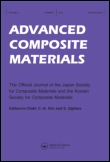
ADVANCED COMPOSITE MATERIALS
Driving Innovation in Composites and CeramicsADVANCED COMPOSITE MATERIALS, published by Taylor & Francis Ltd, is a leading peer-reviewed journal in the field of materials science, specifically focusing on the innovative development and applications of composite materials. With an ISSN of 0924-3046 and E-ISSN 1568-5519, this journal serves as a vital resource for researchers and professionals worldwide, examining cutting-edge advancements and methodologies in composites, ceramics, and mechanical engineering. Having secured a solid standing in the academic community, it boasts impressive Scopus rankings, such as #185 in Mechanical Engineering with a 72nd percentile and #46 in Ceramics and Composites, emphasizing its relevance and rigor. Although not an open-access publication, its insights are invaluable for those looking to explore, contribute to, and stay abreast of the latest breakthroughs in the field from 1991 through 2024. By targeting critical areas within mechanics and material sciences, the journal continues to foster innovation and scholarly discussion, making it an essential venue for specialists striving to advance the capabilities and applications of composite materials.
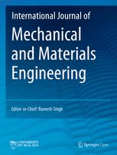
International Journal of Mechanical and Materials Engineering
Unleashing Potential Through Cutting-Edge Engineering InsightsInternational Journal of Mechanical and Materials Engineering is a renowned, open-access journal published by SPRINGER that has established itself as a key platform in the fields of Mechanical Engineering, Materials Science, and Industrial and Manufacturing Engineering. With an impressive Q2 ranking in multiple categories for 2023, including Mechanics of Materials and General Materials Science, the journal provides high-quality research and innovative insights that are critical for advancing the engineering disciplines. Since its inception in 2007, the journal has been pivotal in disseminating knowledge and fostering dialogue amongst researchers, professionals, and students, with the open access model facilitating widespread distribution of its content since 2014. The journal’s affiliation with a prestigious publisher in Switzerland enhances its credibility and reach, making it an invaluable resource for those engaged in cutting-edge research and development in mechanical and materials engineering. With an ISSN of 1823-0334 and an E-ISSN of 2198-2791, this journal invites submissions that contribute to the academic community and inspire future engineering solutions.

MACROMOLECULAR RESEARCH
Catalyzing Progress in Polymer ScienceMACROMOLECULAR RESEARCH, published by the POLYMER SOC KOREA, is a premier journal dedicated to advancing the field of macromolecular science and polymer engineering. With its ISSN 1598-5032 and E-ISSN 2092-7673, this journal has emerged as a vital platform for researchers and professionals interested in the application and development of polymers across various domains. Based in South Korea and operating as an open-access resource since its inception in 2002, MACROMOLECULAR RESEARCH consistently ranks in the Q2 category across diverse fields such as Chemical Engineering, Materials Chemistry, and Organic Chemistry as per the latest 2023 metrics. Notably, it is recognized for its substantial contributions to polymery science, increasing its visibility and impact in global research. By providing a forum for original research articles, reviews, and innovative methodologies, this journal aims to foster collaboration and knowledge sharing among scientists, engineers, and students alike. Join a community that is at the forefront of polymer research by exploring the wealth of resources and cutting-edge studies featured in MACROMOLECULAR RESEARCH.
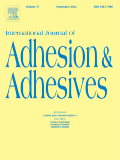
INTERNATIONAL JOURNAL OF ADHESION AND ADHESIVES
Leading the Charge in Adhesive Technology Research.INTERNATIONAL JOURNAL OF ADHESION AND ADHESIVES, published by Elsevier Science Ltd, serves as a premier platform for the dissemination of cutting-edge research findings in the field of adhesion and adhesive technologies. Since its inception in 1980, the journal has consistently ranked highly, reflecting its critical role in advancing knowledge across multiple disciplines, including Biomaterials, Chemical Engineering, and Polymers and Plastics. With its impressive positioning as Q1 in Chemical Engineering and Polymers and Q2 in Biomaterials, it operates within the top echelons of its categories, underscoring its importance to academics and industry professionals alike. The journal also boasts significant Scopus rankings, placing it in the top 75th percentile for Chemical Engineering and in the top 74th percentile for Materials Science. Although it does not offer open access, the journal remains accessible to a wide audience through various institutional subscriptions. The scope of the INTERNATIONAL JOURNAL OF ADHESION AND ADHESIVES includes exploring the fundamental principles and applications of adhesion science, materials interactions, and innovative adhesive formulations, making it an invaluable resource for researchers, professionals, and students dedicated to enhancing material performance and engineering solutions.

FIBERS AND POLYMERS
Exploring the Future of Fibers and PolymersFIBERS AND POLYMERS is a prestigious scholarly journal published by the Korean Fiber Society, specializing in the fields of Chemical Engineering, Chemistry, and Polymer Science. Since its inception in 2000, the journal has provided a dynamic platform for researchers and professionals to disseminate cutting-edge findings and innovative methodologies related to fibers, polymers, and their diverse applications. With its Q2 category ranking across multiple disciplines in 2023 and a commendable standing in Scopus rankings—ranking #183 in General Chemistry and #127 in General Chemical Engineering—it is well-regarded within the academic community. The journal’s commitment to quality research is further underscored by its comprehensive coverage of technological advancements and theoretical developments relevant to both industry and academia. Access to published articles may vary, and authors are encouraged to submit original research to contribute to this evolving field. Join the community shaping the future of materials science through FIBERS AND POLYMERS.

Composites Research
Exploring the Frontiers of Composite TechnologyComposites Research is an esteemed academic journal dedicated to advancing the field of composite materials, published by the Korean Society of Composite Materials. With a focus on innovative research and development, this journal serves as a vital platform for researchers, professionals, and scholars in the field, promoting high-quality papers that discuss both theoretical and practical aspects of composite materials. Although it operates under a traditional access model, the journal remains committed to disseminating essential knowledge and cutting-edge findings relevant to the latest trends and technological advancements in composites. The ISSN 2288-2103 and E-ISSN 2288-2111 ensure the widespread visibility and accessibility of published works. The journal is strategically positioned to contribute to the growing body of knowledge in composite research, enabling the exchange of ideas and collaboration among a global audience.

SAMPE JOURNAL
Exploring the Frontiers of Mechanical Engineering and MaterialsSAMPE JOURNAL, published by SAMPE PUBLISHERS, has served as a pivotal source of knowledge and innovation in the field of engineering and materials science since its inception in 1969. This peer-reviewed journal is dedicated to advancing the science and application of materials and manufacturing processes, catering to the interests of researchers, professionals, and students alike. Although it does not currently offer open access options, its articles are renowned for their depth and rigor, contributing significantly to the ongoing discourse in Mechanical Engineering, General Materials Science, and Mechanics of Materials. With Scopus rankings placing it in the 38th percentile for Mechanical Engineering and 37th for General Materials Science, SAMPE JOURNAL continues to be an essential resource for those striving for excellence in their respective fields. For those invested in pioneering research and innovations, this journal remains a reliable and respected platform for publication and dissemination of knowledge.

Functional Composites and Structures
Bridging Disciplines for Tomorrow's Materials.Functional Composites and Structures is a prestigious academic journal published by IOP Publishing Ltd, dedicated to advancing the field of materials science with a focus on innovative composite materials and their structural applications. Established in 2019 and running through 2024, this journal uniquely bridges several disciplines, consistently ranking in the Q2 quartile across key categories including Ceramics and Composites, Electronic, Optical and Magnetic Materials, and Mechanics of Materials. With a commendable Scopus rank that places it within the top tiers of its field, the journal is instrumental for researchers, engineers, and scholars seeking to explore the latest developments in material properties, functionality, and applications. Although access options are not specified, the open-access nature of the journal promotes wider dissemination and engagement with cutting-edge research. As the demand for smarter, more efficient materials continues to grow, Functional Composites and Structures serves as a vital resource for fostering collaboration and driving innovation in material sciences.
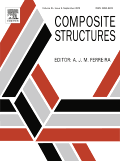
COMPOSITE STRUCTURES
Exploring the Future of Ceramics and CompositesComposite Structures, published by Elsevier Science Ltd, is a premier academic journal that has been at the forefront of research in the fields of Ceramics and Composites and Civil and Structural Engineering since its inception in 1983. With a remarkable Q1 ranking in both categories for 2023, it is recognized as one of the leading publications, occupying the 22nd position in Civil and Structural Engineering and the 14th in Materials Science, showcasing its high-impact contributions to the respective fields. The journal serves as a crucial platform for disseminating cutting-edge research, innovative methodologies, and comprehensive reviews that cater to the academic and professional community. Although it does not offer open access options, its robust impact factor and extensive reach through Scopus ensure that the articles published are widely cited and serve as valuable resources for enhancing the understanding of composite materials and structures. The journal invites contributions that push the boundaries of knowledge, making it an essential read for researchers, engineers, and students invested in advanced materials and structural applications.

Composites Part C: Open Access
Pioneering Research in Materials ScienceComposites Part C: Open Access, an esteemed journal published by Elsevier, is at the forefront of research in the fields of Ceramics and Composites, Mechanical Engineering, and Mechanics of Materials. Launched in 2020, this fully open-access journal facilitates unparalleled access to significant advancements in composite materials, ensuring that research findings are disseminated widely and freely throughout the global academic community. With an impressive Q1 ranking across multiple related categories and robust placements in Scopus rankings, specifically #78 in Mechanical Engineering and #24 in Materials Science, the journal serves as a vital platform for researchers, professionals, and students to publish their work and engage with cutting-edge studies. It aims to foster innovation and collaboration in the development and application of composite materials and their technologies, making it an indispensable resource for anyone invested in these dynamic fields.